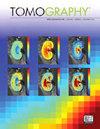High-Riding Conus Medullaris Syndrome: A Case Report and Literature Review—Its Comparison with Cauda Equina Syndrome
IF 2.2
4区 医学
Q2 RADIOLOGY, NUCLEAR MEDICINE & MEDICAL IMAGING
引用次数: 0
Abstract
Introduction: Conus medullaris syndrome (CMS) is a distinctive spinal cord injury (SCI), which presents with varying degrees of upper motor neuron signs (UMNS) and lower motor neuron signs (LMNS). Herein, we present a case with a burst fracture injury at the proximal Conus Medullaris (CM). Case Presentation: A 48-year-old Taiwanese male presenting with lower back pain and paraparesis was having difficulty standing independently after a traumatic fall. An Imaging survey showed an incomplete D burst fracture of the T12 vertebra. Posterior decompression surgery was subsequently performed. However, spasticity and back pain persisted for four months after surgical intervention. Follow-up imaging with single photon emission computed tomography (SPECT) and a whole body bone scan both showed an increased uptake in the T12 vertebra. Conclusion: The high-riding injury site for CMS is related to a more exclusive clinical representation of UMNS. Our case’s persistent UMNS and scintigraphy findings during follow-up showcase the prolonged recovery period of a UMN injury. In conclusion, our study provides a different perspective on approaching follow-up for CM injuries, namely using scientigraphy techniques to confirm localization of persistent injury during the course of post-operative rehabilitation. Furthermore, we also offered a new technique for analyzing the location of lumbosacral injuries, and that is to measure the location of the injury relative to the tip of the CM. This, along with clinical neurological examination, assesses the extent to which the UMN is involved in patients with CMS, and is possibly a notable predictive tool for clinicians for the regeneration time frame and functional outcome of patients with lumbosacral injuries in the future.高椎圆锥综合征1例并文献复习——与马尾综合征的比较
简介:髓圆锥综合征(Conus medullaris syndrome, CMS)是一种独特的脊髓损伤(SCI),表现为不同程度的上运动神经元体征(upper motor neuron signs, UMNS)和下运动神经元体征(lower motor neuron signs, LMNS)。在此,我们提出一例在近端髓圆锥(CM)发生爆裂性骨折损伤的病例。病例介绍:一名48岁台湾男性,因创伤性跌倒后出现腰痛及下肢麻痹,难以独立站立。影像学检查显示T12椎体不完全性D型爆裂骨折。随后进行后路减压手术。然而,痉挛和背部疼痛在手术干预后持续了4个月。后续单光子发射计算机断层扫描(SPECT)和全身骨扫描均显示T12椎体摄取增加。结论:CMS的高程损伤部位与UMNS的临床表现更为专一有关。本病例的持续性UMNS和随访期间的闪烁成像结果显示UMNS损伤的恢复期延长。总之,我们的研究为CM损伤的随访提供了一个不同的视角,即在术后康复过程中使用科学技术来确定持续性损伤的定位。此外,我们还提供了一种分析腰骶损伤位置的新技术,即测量相对于CM尖端的损伤位置。这与临床神经学检查一起,评估了UMN在CMS患者中的影响程度,并且可能是临床医生未来腰骶损伤患者再生时间框架和功能结果的重要预测工具。
本文章由计算机程序翻译,如有差异,请以英文原文为准。
求助全文
约1分钟内获得全文
求助全文
来源期刊

Tomography
Medicine-Radiology, Nuclear Medicine and Imaging
CiteScore
2.70
自引率
10.50%
发文量
222
期刊介绍:
TomographyTM publishes basic (technical and pre-clinical) and clinical scientific articles which involve the advancement of imaging technologies. Tomography encompasses studies that use single or multiple imaging modalities including for example CT, US, PET, SPECT, MR and hyperpolarization technologies, as well as optical modalities (i.e. bioluminescence, photoacoustic, endomicroscopy, fiber optic imaging and optical computed tomography) in basic sciences, engineering, preclinical and clinical medicine.
Tomography also welcomes studies involving exploration and refinement of contrast mechanisms and image-derived metrics within and across modalities toward the development of novel imaging probes for image-based feedback and intervention. The use of imaging in biology and medicine provides unparalleled opportunities to noninvasively interrogate tissues to obtain real-time dynamic and quantitative information required for diagnosis and response to interventions and to follow evolving pathological conditions. As multi-modal studies and the complexities of imaging technologies themselves are ever increasing to provide advanced information to scientists and clinicians.
Tomography provides a unique publication venue allowing investigators the opportunity to more precisely communicate integrated findings related to the diverse and heterogeneous features associated with underlying anatomical, physiological, functional, metabolic and molecular genetic activities of normal and diseased tissue. Thus Tomography publishes peer-reviewed articles which involve the broad use of imaging of any tissue and disease type including both preclinical and clinical investigations. In addition, hardware/software along with chemical and molecular probe advances are welcome as they are deemed to significantly contribute towards the long-term goal of improving the overall impact of imaging on scientific and clinical discovery.
 求助内容:
求助内容: 应助结果提醒方式:
应助结果提醒方式:


